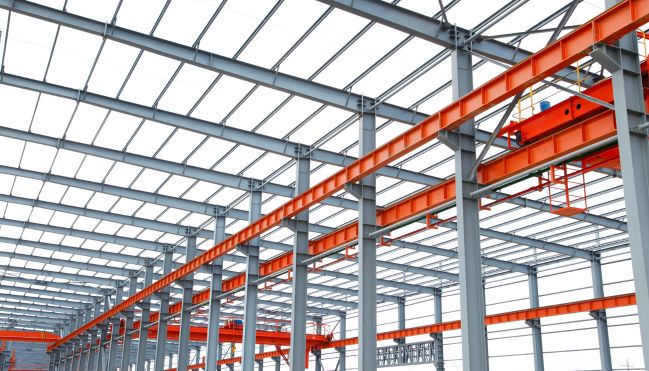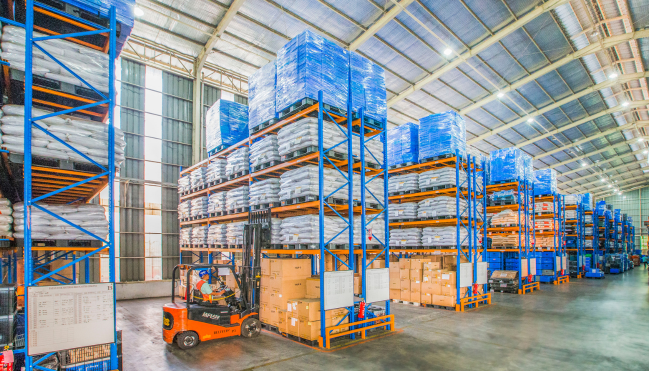How Prefabricated Steel Structures Are Revolutionizing Factory Construction in Uganda?

In Uganda, industrialization is rapidly transforming Uganda cities like Kampala, Entebbe, Jinja, Mbarara, Mbale and others. As industries grow, the need for robust, efficient and modern construction methods has led to the adoption of prefabricated steel structures. These structures are changing the way factories are built, bringing innovation and efficiency to urban and regional industrial hubs.
Kampala: Setting the Benchmark for Prefabrication in Factories
The economic heart of Uganda, has embraced prefabricated factory buildings for industrial construction. The city’s fast-paced industrial expansion requires infrastructure that can be assembled quickly and customized to fit specific production needs. Factory builders in Kampala are using prefabrication for factories to develop industrial parks, warehouses and manufacturing units that meet the city’s dynamic demands.
- Integration in Industrial Zones: Factory builders in areas like Nakawa and Luzira are using prefabricated factory for industries such as agro-processing, textiles and pharmaceuticals.
- Flexibility: The flexibility of steel structures accommodates heavy machinery and advanced production lines, keeping Kampala competitive both locally and internationally.

Entebbe: A Gateway for Industrial Growth
Known for its strategic location near Uganda’s international airport, is emerging as a hub for logistics and manufacturing. The city’s focus on industrial development is enhanced by the use of prefabricated steel structures, which are ideal for constructing factory sheds near transportation hubs.
- Strategic Location: Entebbe’s proximity to Uganda’s international airport gives it an edge for logistics and manufacturing.
- Support for Export Operations: Prefabricated factory sheds near the airport help streamline imports/exports and reduce operational delays.
- Enhanced Efficiency: The integration of prefabricated steel structure buildings allows businesses to grow in line with the city’s emerging role.
Jinja: Harnessing Prefabrication for Industrial Heritage
It is often referred to as the industrial heartland of Uganda, has a long history of factory operations along the Nile River. As industries modernize, the city has shifted toward prefabricated factory buildings to meet evolving demands.
With its thriving sugar, textile and steel industries, Jinja’s factory shed builders are utilizing prefab factory sheds to create industrial spaces that maximize production capacity. The adaptability of prefabricated factory sheds ensures that Jinja’s industrial heritage is preserved while accommodating contemporary manufacturing technologies.
- Modernization with Prefabrication: Factory shed builders in Jinja are utilizing prefabricated factory buildings to create adaptable spaces for modern manufacturing.
- Maximizing Capacity: Prefabricated steel structures allow for high-capacity production while preserving Jinja’s industrial legacy.
Mbarara: Driving Industrial Expansion in Western Uganda
As the largest city in western Uganda, Mbarara is becoming an industrial powerhouse. The city is witnessing rapid growth in sectors like pharmaceuticals. To meet these demands, prefabrication for factory construction has become a key strategy for Mbarara’s industrial expansion.
- Industrial Hub in Western Uganda: Mbarara is seeing rapid growth in agro and dairy processing.
- Adaptability to Environmental Conditions: Prefabricated factory sheds are designed to withstand local environmental factors.
- Efficiency and Scalability: Using prefabricated steel structures allows for faster project completion, meeting the growing demand of industrial sectors.
Mbale: Supporting Emerging Industries with Prefabrication
City in eastern Uganda, is gaining prominence as a center for emerging industries. Prefabricated steel construction is playing a critical role in supporting industries like coffee processing and packaging. Factory shed contractors in Mbale are using prefabricated factory sheds to establish production facilities that cater to the region’s agricultural economy.
- Rise of Emerging Industries: As Mbale’s industries, such as grain milling and expand prefabricated factory buildings become a practical solution.
- Accommodating Advanced Equipment: Factory sheds are being designed with ample space for modern machinery and storage, helping industries scale their operations.
Masaka: Embracing Prefabrication for Regional Growth
Located in central Uganda, is leveraging factory steel structures to accelerate its regional industrial growth. Known for its agriculture and fish processing industries, Masaka is adopting prefabricated factory buildings to modernize its infrastructure.
- Industrial Growth Focus: Masaka, known for agriculture and fish processing, is adopting prefabricated factory sheds to support industrialization.
- Customization: The prefabricated structures are designed to meet specific production requirements, positioning Masaka as a regional industrial hub.
Arua: Prefabrication as a Catalyst for Northern Development
Arua, located in northern Uganda, is emerging as a focal point for development. Prefabricated factory sheds are essential for constructing industrial facilities that support the region’s growing trade and agricultural activities.
- Merging Point for Trade and Agriculture: Arua, situated near the South Sudanese border, is key for cross-border trade and agriculture.
- Durability and Scalability: Prefabricated factory sheds are built to handle the region’s trade and agricultural demands efficiently, supporting both domestic and international markets.
Gulu: Revitalizing Industry with Modern Construction
The largest city in northern Uganda, is undergoing a transformation fueled by industrialization. Prefabricated factory buildings are central to the city’s efforts to attract investment and revitalize its economy. Factory contractors in Gulu are integrating factory steel structures into projects that include agro-processing plants, warehouses and assembly lines.
- Industrial Transformation: Gulu is focused on modernizing its industrial sector with prefabricated steel structures.
- Assembly Plants: Factory contractors in Gulu use these structures to create plants for warehousing and assembly lines.
Hoima: Fueling Industrial Growth Through Prefabrication
Known for its oil and gas resources, is at the forefront of industrial development in Uganda. Prefabricated factory sheds are playing a significant role in establishing facilities that support the oil sector, including maintenance units, equipment storage and processing plants. This includes structures with high load-bearing capacities and advanced insulation to withstand harsh operational conditions.
- Oil and Gas Industry: Hoima’s focus on oil and gas has created a demand for prefabricated factory sheds.
- Specialized Designs: Steel structures are designed to meet the specific needs of the energy sector, with high load-bearing capacities and advanced insulation.
- Support for Sector Development: These prefabricated structures help establish maintenance units, equipment storage and processing plants, ensuring the sustainability of the sector.
Lira: Building Industrial Resilience with Prefabricated Structures
The key city in northern Uganda, is embracing prefabrication for factories to support its industrial growth. Known for its agro-industrial activities, Lira relies on prefabricated factory sheds to create modern production facilities that drive economic resilience.
- Focus on Industrial Growth: Lira is embracing prefabrication structures to create resilient industrial infrastructure.
- Quick Project Completion: The prefabricated factory sheds provide efficient and scalable solutions, helping to establish modern production facilities.
Fort Portal: Combining Prefabrication and Sustainability
City known for its natural beauty, is incorporating prefabricated factory sheds into its industrial projects while prioritizing sustainability. The city’s industries, including tea processing and tourism-related manufacturing, benefit from factory steel structures that are eco-friendly and efficient.
- Eco-Friendly Construction: Fort Portal is incorporating sustainable prefabricated factory sheds to support its tea processing and tourism industries.
- Sustainable Industrial Development: The city is ensuring industrial growth doesn’t compromise its natural beauty by adopting eco-friendly construction methods.
Kabale: Meeting High-Altitude Construction Challenges
Located in a peak region, faces unique challenges in construction due to its terrain and weather conditions. Prefabricated steel structures and factory sheds offer a practical solution for factory construction in this region.
- Construction in High-Altitude Areas: Kabale, situated in a mountainous region, faces unique construction challenges.
- Weather-Resilient Structures: Factory contractors are leveraging prefabricated factory sheds that are designed to be resilient and adaptable to the area’s climate, promoting industrial development in challenging terrains.
Soroti: Prefabrication for a Growing Agro-Industrial Hub
The emerging agro-industrial center in eastern Uganda, is utilizing prefabricated factory buildings to support industries.
Factory builders in Soroti are designing factory steel structures that accommodate large-scale storage and advanced processing technologies. The city’s adoption of prefabrication ensures that it remains a key player in Uganda’s agro-industrial sector.
- Focus on Agro-Industry: Soroti is positioning itself as an agro-industrial hub, with industries like fruit processing and dairy production.
- Customization for Large-Scale Operations: Prefabricated factory buildings are used to establish large-scale storage and processing facilities, allowing businesses to expand and meet the region’s growing demands.
Conclusion
Prefabricated steel structures are revolutionizing factory construction in Kampala and cities across Uganda. From the bustling industrial zones of Kampala to the agro-industrial centers of Jinja, Mbarara and Soroti, prefabricated factory sheds and factory steel structures are driving modernization and efficiency. By adopting innovative construction methods, these cities are positioning themselves as leaders in industrial development, ensuring long-term growth and sustainability for Uganda’s economy.
FAQs About Prefabricated Steel Structures
- Ready-to-Assemble Steel Structure to Sudan for the United Nations – Case Study
- Which Steel Cable Tray Type is Best? A Look at Perforated, Ladder, Wire Mesh & Flexible Trays
- The Impact of Temperature Variations on Cold Storage Warehouses in Different Cities of Uganda
- The Impact of Factory Shed Layout on Workflow Efficiency
- Uganda’s Rising Demand for Cold Storage Builders in the Logistics Industry


